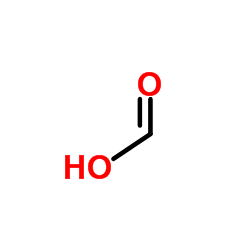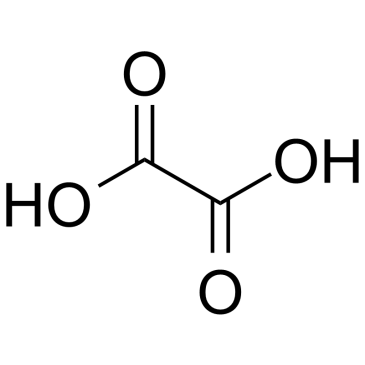1064-48-8
| Name | Amido Black 10B |
|---|---|
| Synonyms |
Black 10B
Vondamol Light Black 10B Dinatrium-4-amino-5-hydroxy-3-[(E)-(4-nitrophenyl)diazenyl]-6-[(E)-phenyldiazenyl]-2,7-naphthalendisulfonat Fast Sulon Black BN Metamine Blue Black Amido Black 10 B KURO401 Naphtocard Black 12B aniline blue black CI NO 0470 Fast Sulfon Black BN Sodium 4-amino-5-hydroxy-3-(4-nitrophenylazo)-6-(phenylazo)naphthalene-2,7-disulphonate Comacid Blue Black B Calcocid Blue Black 2R 4-Amino-5-hydroxy-3-[(E)-(4-nitrophényl)diazènyl]-6-[(E)-phényldiazènyl]-2,7-naphtalènedisulfonate de disodium Disodium 4-amino-5-hydroxy-3-[(E)-(4-nitrophenyl)diazenyl]-6-[(E)-phenyldiazenyl]-2,7-naphthalenedisulfonate Kayaku Acid Blue Black 10B Naphthylamine Black 10BR Wool Navy Blue 2B DermBlueP Airedale Black 2BG Fenazo Blue Black acidblackh Acid Brown 187 Naphthazine Blue Black 6BN Acidal Black 10B Amacid Black 10BR Napthol Blue Black Brasilan Black BS naphthol blue-black MFCD00004017 Buffalo Black NBR Amido Black Staining 2,7-Naphthalenedisulfonic acid, 4-amino-5-hydroxy-3-[(E)-2-(4-nitrophenyl)diazenyl]-6-[(E)-2-phenyldiazenyl]-, sodium salt (1:2) 2,7-Naphthalenedisulfonic acid, 4-amino-5-hydroxy-3-((4-nitrophenyl)azo)-6-(phenylazo)-, disodium salt Aniline blue-black Aminoschwarz 10B Acid Blue Black B Pontacyl Blue Black SX Hispacid Black 10B Eriosin Blue Black B AMIDO BLACK Mitsui Acid Blue Black Acilan Black 10B Acid Black 1 Acidal Navy Blue 3BR naphtol blue black Boruta Black A Leather Black 10B Colacid Black 10A Naphthol Blue Black Tertracid Blue Black NB EINECS 213-903-1 Bucacid Blue Black 2,7-naphthalenedisulfonic acid, 4-amino-5-hydroxy-3-[(E)-(4-nitrophenyl)azo]-6-[(E)-phenylazo]-, disodium salt Java Blue Black 10B Amido Schwarz ACID BLACK Hidacid Blue Black Disodium 4-amino-5-hydroxy-3-[(E)-(4-nitrophenyl)diazenyl]-6-[(E)-phenyldiazenyl]naphthalene-2,7-disulfonate Calcocid Blue Black Diacid Blue Black 10B |
| Description | Amido Black 10B (Naphthol Blue Black) is a highly toxic azo dye for amino acid staining. Amido Black 10B can create several problems in the human respiratory system and may also cause skin and eye irritations[1]. |
|---|---|
| Related Catalog | |
| References |
| Density | 1.05 g/mL at 20 °C |
|---|---|
| Molecular Formula | C22H14N6Na2O9S2 |
| Molecular Weight | 616.491 |
| Flash Point | 30 °C |
| Exact Mass | 616.005920 |
| PSA | 272.67000 |
| LogP | 7.94080 |
| Storage condition | Store at RT. |
| Stability | Stable. Incompatible with strong oxidizing agents. |
| Water Solubility | 10 G/L (25 ºC) |
Synonym:Naphthol blue black; Amido Schwarz Section 2 - COMPOSITION, INFORMATION ON INGREDIENTS
Risk Phrases: 20/21 33 Section 3 - HAZARDS IDENTIFICATION EMERGENCY OVERVIEW
Harmful by inhalation and in contact with skin. Danger of cumulative effects.The toxicological properties of this material have not been fully investigated. Potential Health Effects Eye: Causes eye irritation. May cause chemical conjunctivitis. Skin: Causes skin irritation. Ingestion: May cause gastrointestinal irritation with nausea, vomiting and diarrhea. Inhalation: Causes respiratory tract irritation. Can produce delayed pulmonary edema. Chronic: Effects may be delayed. Section 4 - FIRST AID MEASURES Eyes: Flush eyes with plenty of water for at least 15 minutes, occasionally lifting the upper and lower eyelids. Get medical aid immediately. Skin: Get medical aid. Wash clothing before reuse. Flush skin with plenty of soap and water. Ingestion: Never give anything by mouth to an unconscious person. Get medical aid. Do NOT induce vomiting. If conscious and alert, rinse mouth and drink 2-4 cupfuls of milk or water. Inhalation: Remove from exposure and move to fresh air immediately. If not breathing, give artificial respiration. If breathing is difficult, give oxygen. Get medical aid. Notes to Physician: Treat symptomatically and supportively. Section 5 - FIRE FIGHTING MEASURES General Information: As in any fire, wear a self-contained breathing apparatus in pressure-demand, MSHA/NIOSH (approved or equivalent), and full protective gear. During a fire, irritating and highly toxic gases may be generated by thermal decomposition or combustion. Extinguishing Media: Use agent most appropriate to extinguish fire. Use water spray, dry chemical, carbon dioxide, or appropriate foam. Section 6 - ACCIDENTAL RELEASE MEASURES General Information: Use proper personal protective equipment as indicated in Section 8. Spills/Leaks: Clean up spills immediately, observing precautions in the Protective Equipment section. Sweep up, then place into a suitable container for disposal. Avoid generating dusty conditions. Provide ventilation. Section 7 - HANDLING and STORAGE Handling: Wash thoroughly after handling. Use with adequate ventilation. Avoid contact with eyes, skin, and clothing. Avoid contact with eyes. Keep container tightly closed. Avoid ingestion and inhalation. Wash clothing before reuse. Storage: Store in a tightly closed container. Store in a cool, dry, well-ventilated area away from incompatible substances. Section 8 - EXPOSURE CONTROLS, PERSONAL PROTECTION Engineering Controls: Facilities storing or utilizing this material should be equipped with an eyewash facility and a safety shower. Use adequate ventilation to keep airborne concentrations low. Exposure Limits CAS# 1064-48-8: Personal Protective Equipment Eyes: Wear appropriate protective eyeglasses or chemical safety goggles as described by OSHA's eye and face protection regulations in 29 CFR 1910.133 or European Standard EN166. Skin: Wear appropriate protective gloves to prevent skin exposure. Clothing: Wear appropriate protective clothing to prevent skin exposure. Respirators: A respiratory protection program that meets OSHA's 29 CFR 1910.134 and ANSI Z88.2 requirements or European Standard EN 149 must be followed whenever workplace conditions warrant respirator use. Section 9 - PHYSICAL AND CHEMICAL PROPERTIES Physical State: Solid Color: black Odor: Not available pH: Not available. Vapor Pressure: Not available. Viscosity: Not available. Boiling Point: Not available. Freezing/Melting Point: Not available. Autoignition Temperature: Not applicable. Flash Point: Not applicable. Explosion Limits, lower: Not available. Explosion Limits, upper: Not available. Decomposition Temperature: Not available. Solubility in water: Not available. Specific Gravity/Density: Not available. Molecular Formula: C22H14N6O9S2Na2 Molecular Weight: 616.48 Section 10 - STABILITY AND REACTIVITY Chemical Stability: Stable at room temperature in closed containers under normal storage and handling conditions. Conditions to Avoid: Incompatible materials, none reported, excess heat. Incompatibilities with Other Materials: Strong oxidizing agents. Hazardous Decomposition Products: Oxides of nitrogen, oxides of sulfur, irritating and toxic fumes and gases. Hazardous Polymerization: Has not been reported. Section 11 - TOXICOLOGICAL INFORMATION RTECS#: CAS# 1064-48-8: QJ6196000 LD50/LC50: Not available. Carcinogenicity: C.I. Acid Black - Not listed by ACGIH, IARC, or NTP. Other: See actual entry in RTECS for complete information. Section 12 - ECOLOGICAL INFORMATION Section 13 - DISPOSAL CONSIDERATIONS Dispose of in a manner consistent with federal, state, and local regulations. Section 14 - TRANSPORT INFORMATION IATA Not regulated as a hazardous material. IMO Not regulated as a hazardous material. RID/ADR Not regulated as a hazardous material. Section 15 - REGULATORY INFORMATION European/International Regulations European Labeling in Accordance with EC Directives Hazard Symbols: XN Risk Phrases: R 20/21 Harmful by inhalation and in contact with skin. R 33 Danger of cumulative effects. Safety Phrases: S 28A After contact with skin, wash immediately with plenty of water. S 37 Wear suitable gloves. S 45 In case of accident or if you feel unwell, seek medical advice immediately (show the label where possible). WGK (Water Danger/Protection) CAS# 1064-48-8: 1 Canada CAS# 1064-48-8 is listed on Canada's DSL List. CAS# 1064-48-8 is not listed on Canada's Ingredient Disclosure List. US FEDERAL TSCA CAS# 1064-48-8 is listed on the TSCA inventory. SECTION 16 - ADDITIONAL INFORMATION N/A |
CHEMICAL IDENTIFICATION
HEALTH HAZARD DATAACUTE TOXICITY DATAMUTATION DATA
|
| Symbol |


GHS02, GHS07 |
|---|---|
| Signal Word | Warning |
| Hazard Statements | H226-H315-H319-H336 |
| Precautionary Statements | P261-P305 + P351 + P338 |
| Personal Protective Equipment | dust mask type N95 (US);Eyeshields;Gloves |
| Hazard Codes | Xi:Irritant |
| Risk Phrases | R36/37/38 |
| Safety Phrases | 26-36-37/39-45-36/37/39-23-16 |
| RIDADR | UN 2924 3/PG 3 |
| WGK Germany | 3 |
| RTECS | QJ6196000 |
| Hazard Class | 3.0 |
| HS Code | 3204120000 |
| HS Code | 3204120000 |
|---|




